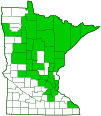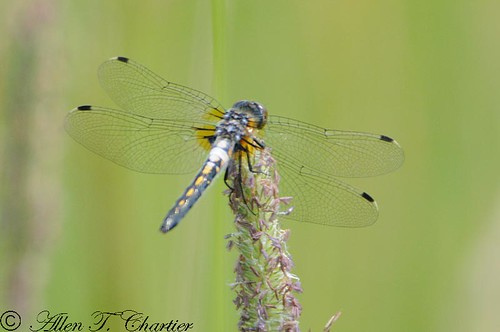frosted whiteface
(Leucorrhinia frigida)
Conservation • Description • Habitat • Ecology • Distribution • Taxonomy
|
|
|||||||||||||
Description |
Frosted whiteface is a small skimmer, 1⅛″ to 1 5 ⁄16″ long. The thorax on mature males is brown with mostly black “shoulder” patches and small black spots on the back between the wing bases. There are no red markings on the thorax. The abdomen is black and stocky. Abdominal segments 1 through 4 are covered with a whitish, waxy bloom (pruinescence). The face is white. The wings are clear except for a small black patch at the base of the hindwings and a black thickened cell (stigma) at the leading edge of each wing. The region of the wing just beyond the forewing triangle has only two rows of cells. The legs are black. Females have dull yellow spots on the dorsal surface of abdominal segments 2 through 7. The spots become smaller and narrower as they go down the abdomen and on segment 7 it is a thin line. Some females develop pruinescence like the male. They have an amber patch on the basal 20% of the wing. Juveniles have a yellow thorax that quickly becomes brown with age. On juvenile males abdominal segments 1 through 3 are yellow and 4 through 10 are black. On juvenile females there are thin, yellow, dorsal spots on segments 4 through 7. |
Size |
Total length: 1⅛″ to 1 5 ⁄16″ |
Similar Species |
Belted whiteface (Leucorrhinia proxima) is larger and has a longer, more slender abdomen. Males have red spots on the thorax between the wing bases. The pruinescence on the abdomen sometimes extends to segment 6. The region of the wing just beyond the forewing triangle has 3 rows of cells. Chalk-fronted corporal (Ladona julia) is larger, has a stockier abdomen, and has white “shoulder” patches. |
Habitat |
Bog-bordered ponds, lakes, sometimes marsh-bordered ponds |
Ecology |
Season |
Mid-May to mid-August |
Behavior |
They hunt from low plants at wetland edges. Males perch on low vegetation and defend a territory of one to two square yards. |
Life Cycle |
While the female deposits her eggs her mate will guard her by snatching and holding a rival male until the eggs are laid. |
Naiad Food |
|
Adult Food |
|
Distribution |
||
|
Sources Biodiversity occurrence data published by: Minnesota Biodiversity Atlas (accessed through the Minnesota Biodiversity Atlas Portal, bellatlas.umn.edu, 7/28/2025). |
|
| 7/28/2025 | ||
Occurrence |
||
Fairly common |
||
Taxonomy |
|
Order |
Odonata (Dragonflies and Damselflies) |
Suborder |
|
Superfamily |
Libelluloidea |
Family |
Libellulidae (skimmers) |
Genus |
Leucorrhinia (whitefaces) |
Subordinate Taxa |
|
|
|
Synonyms |
|
|
|
Common Names |
|
frosted whiteface |
|
Glossary
Pruinescence
A waxy bloom that covers the underlying coloration and gives a dusty or frosty appearance.
Stigma
In plants, the portion of the female part of the flower that is receptive to pollen. In Lepidoptera, an area of specialized scent scales on the forewing of some skippers, hairstreaks, and moths. In other insects, a thickened, dark, or opaque cell on the leading edge of the wing.
Visitor Photos |
||
Share your photo of this insect. |
||
This button not working for you? |
||
|
||
|
||
MinnesotaSeasons.com Photos |
||
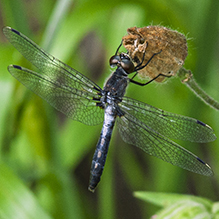 |
||
Pruinose female |
|
|
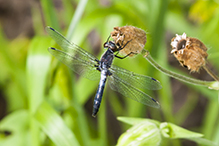 |
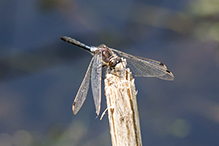 |
|
Pruinose female |
Mature male |

Visitor Videos |
||
Share your video of this insect. |
||
This button not working for you? |
||
|
Other Videos |
||
Frosted Whiteface? (Libellulidae: Leucorrhinia frigida?) Male on Grass |
About
Uploaded on Jun 21, 2011 Identity needs to be confirmed...this could be a Banded Whiteface (L. proxima). Photographed at the Turtle River State Park, North Dakota (20 June 2011). |

Visitor Sightings |
||
Report a sighting of this insect. |
||
This button not working for you? |
||
|
|
MinnesotaSeasons.com Sightings |
||

Created: 12/20/2015 Last Updated: © MinnesotaSeasons.com. All rights reserved. |
